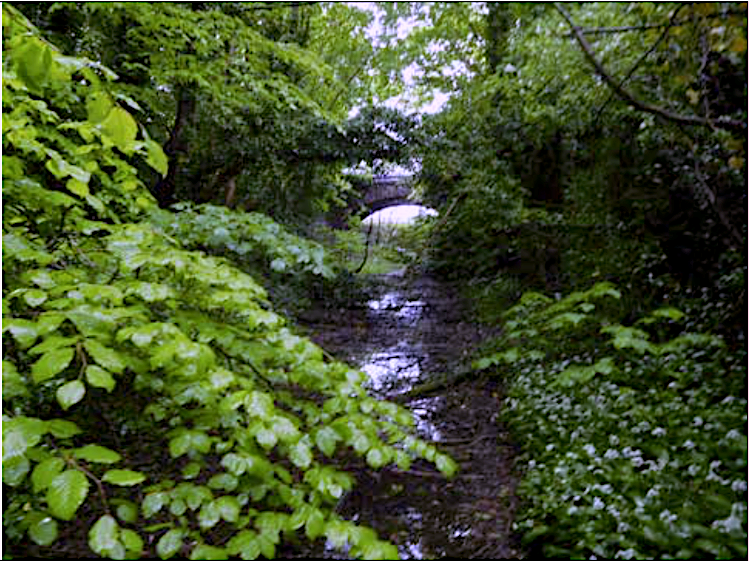
The Strawberry Line is an ambitious project to provide a safe off-road path for cyclists and others, linking the communities along the southern boundary of the Mendip Hills. It seeks, as far as possible, to follow the track of the old railway line of that name, famous for the boxes of fruit it hauled to market in the early 20th century. Sadly, because of the short-sightedness of previous generations, large sections of the track bed were sold off when the line was closed in the 1960s following the Beeching Report, and are having to be reacquired or bypassed to complete the route.
One short section that provides an obvious opportunity for use as a cycle path is in Shepton Mallet, where plans to link new estates to the north of the town with the main shopping area are well advanced. The route is on land owned by a supportive District Council, and crucially uses a former railway bridge to take walkers and cyclists safely under a dangerous bend on the A371. It is, in the currently fashionable phrase, virtually ‘shovel ready’.
The proposal is blocked, however, by a little-known body called Highways England Historical Railway Estate (HEHRE) – an Agency reporting to Highways England which manages all the assets of disused railway lines that could not be sold off. Until, presumably, the Department of Transport got itself a better PR department, it was known with disarming honesty as the ’ burdensome estate’ and its operations still reflect that negative stance. Instead of seeing the bridges, embankments and cuttings left when railways closed as potential assets, these structures – often magnificent works of Victorian engineering – are simply seen as a burden.
HEHRE have refused a licence to allow the proposed cycle path to pass under their bridge, and without it the scheme cannot proceed. The reason given is that the need to ensure the bridge is safe for those passing underneath might incur additional cost – a curious argument since it is safe enough to allow hundreds of cars and lorries to pass over the top of it every day. The real reason is that HRHRE wants to offload the bridge and its responsibility to maintain it onto the local authority; and the chances of a cash-strapped local authority taking on any extra costs at this time is pretty remote.
This is not the only instance in which local communities in the Mendips have fallen foul of HEHRE. At Masbury, the bridge over a different part of old railway track was filled in with concrete, despite protests from local campaigners with ambitions to use the track bed for a cycleway. Blocking the bridge was cheaper than strengthening it in a way that preserved access; and cutting cost seems to be what HEHRE is all about. Their formal remit is hard to track down, but email correspondence concerning the blocked application leaves one in no doubt that it is to minimise cost. In one exchange with the Strawberry Line Group, the HEHRE Engineer stated baldly,
“Our operational remit comes directly from the Secretary of State for Transport (not from HE) and is to ensure that the liability to the SoSfT is kept to a minimum.” He added, “The additional burden associated with so many cycle campaign groups wanting to open up so many of these structures is far too substantial”.
It seems incredible that while the Department of Transport has a clear responsibility to promote sustainable transport, that is not reflected in the remit of its agencies. Highways England thinks only about roads, while HEHRE has an even more restricted remit – to reduce the cost to the department of the ‘burdensome estate’, regardless of the consequences for the Department’s wider objectives. It would be hard to find a better example of the failure to join up government.
Now that coronavirus has jolted the government into realising the benefits of sustainable transport, it would be a good time for radical reform of the remit of HEHRE. Promoting cycling and walking needs more than a few temporary white lines in town centres and the closure of the odd country lane to cars. Instead of rushing round the country seeking to splash a little cash on small ‘shovel ready’ projects, the Department of Transport should take a long hard look at itself and ensure that the role of its agencies supports, rather than undermines, its strategic purpose.
I’ve written to the Secretary of State, asking that the Department for Transport treats its historic railway properties as assets available to promote sustainable transport, and not as liabilities to be offloaded at the earliest opportunity. If you agree, why not write to your MP about it and try to bring about a change.




